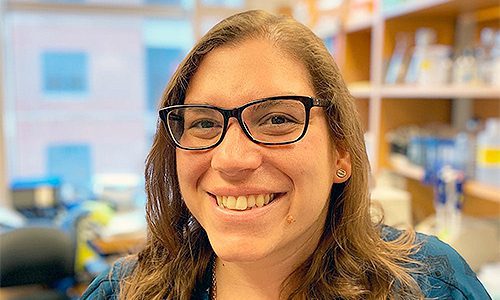Jessica Llewellyn Awarded ALF Research Award for Important Work on Biliary Atresia
Biliary Atresia Fund for the Cure Postdoctoral Research Fellowship Award
Jessica Llewellyn
University of Pennsylvania
Identification and characterization of fibrogenic cell of the extrahepatic bile duct
Mentor: Rebecca G. Wells, MD
What is your first memory/experience of wanting to be involved in scientific research?
I was inspired to study biology in the hope of going into scientific research by my high school teacher, who herself had been a researcher before becoming a teacher. She was incredibly enthusiastic and passionate, and first explained how important scientific research is in improving people’s health.
How did you learn that you had won an ALF Research Award?
I was at a conference when my mentor came to find me and congratulate me just before the session I was presenting in started.
Describe your Research Award Project in very simple (layman) language?
Biliary atresia is a liver disease that exclusively affects infants and is the main reason for liver transplants in children. It occurs when the extrahepatic bile duct, the ducts which allows bile to flow from the liver to the gut, is injured and becomes blocked. This leads to the backflow of the bile into the liver causing injury, scarring and eventually liver cirrhosis. The cell responsible for the scarring in the extrahepatic bile duct has not yet been identified. In this project, I will characterize all the cells of the extrahepatic bile duct in both neonatal and adult mice. This will allow me to identify different population of cells, including the cells responsible for scarring during biliary atresia. I will also investigate the mechanisms of activation of these cells to scar producing cells in the hope of identifying pathways which may be targeted by drugs in the hope of developing strategies to halt or even reverse damage done by these cells.
What do you hope your research project will lead to?
- In the short term:
Identification of the fibrogenic cell of the extrahepatic bile duct and mechanisms of activation of these cells in neonates and adults. - In its overall contribution to a specific area of liver research:
This project will lead to a better understanding of the early stages of biliary atresia.
How did you first hear about the ALF Research Award Program?
A department email which encouraged us to apply.
What is the one thing you would like readers to know about why liver research is so important?
Biliary atresia is the main cause for liver transplant in children worldwide. Additionally, there is still very little known about the cause and early progression of this fatal infant disease. A better understanding of these through research will allow the development of new strategies to treat and hopefully eventually cure biliary atresia.
Last Updated on August 14, 2019
Share this page






